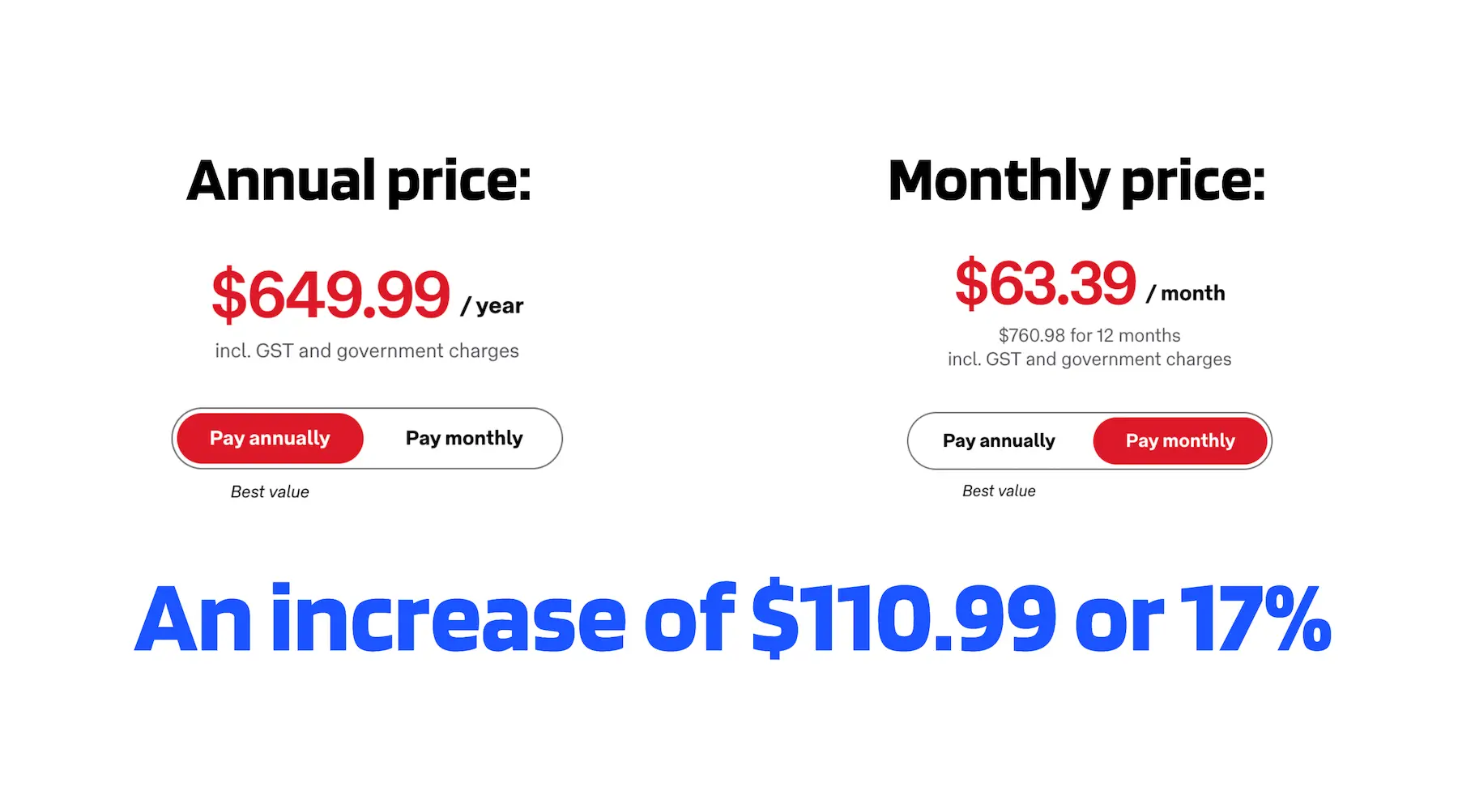How much is car insurance?
The average comprehensive car insurance premium cost is $134 a month – but we’ve got third party policies starting from $18 a month.


We researched over 30 comprehensive car insurance providers and 19 third party car insurance brands. We found the average annual car insurance premium costs:


Note: For information on how we got these quotes, see our car insurance methodology.
Brand | Comprehensive | Apply |
|---|---|---|
$862 | ||
| $886 | |
$959 | ||
$992 | ||
$1,036 | ||
$1,036 | ||
$1,043 | ||
$1,057 | ||
$1,060 | ||
$1,074 |
Average cost in Australia | New South Wales | Queensland | South Australia | Tasmania | Victoria | Western Australia | |
|---|---|---|---|---|---|---|---|
| Budget Direct | $992 | $1,148 | $941 | $978 | $829 | $1,180 | $880 |
| Virgin | $1,057 | $1,214 | $1,013 | $1,046 | $880 | $1,254 | $934 |
| Suncorp | $1,559 | $2,003 | $2,107 | $1,240 | $1,100 | $1,588 | $1,317 |
| Everday | $1,552 | $1,861 | $1,356 | $1,402 | $1,218 | $2,070 | $1,403 |
| Hume Bank | $959 | $900 | $1,036 | $922 | $783 | $1,280 | $831 |
| ROLLiN' | $886 | $1,151 | $843 | $690 | $709 | $1,248 | $674 |
| Bingle | $862 | $935 | $872 | $724 | $726 | $1,156 | $761 |
| Huddle | $1,407 | $1,702 | $1,261 | $1,286 | $1,112 | $1,848 | $1,233 |
| Real Insurance | $1,464 | $1,752 | $1,277 | $1,326 | $1,147 | $1,959 | $1,321 |
| AAMI | $1,218 | $1,884 | $1,106 | $1,015 | $985 | $1,318 | $1,002 |
State | Cost |
|---|---|
| New south wales | $1,698 |
| Victoria | $1,721 |
| Queensland | $1,274 |
| South australia | $1,233 |
| Western australia | $1,242 |
| Tasmania | $1,128 |
Age | Average cost |
|---|---|
| 20 | $2,387 |
| 30 | $1,293 |
| 40 | $1,116 |
| 50 | $1,010 |
| 60 | $899 |
Brand | Cost |
|---|---|
| Virgin | $378.90 |
| Budget Direct | $379.57 |
| Bingle | $425.84 |
| Qantas | $434.42 |
| Australia Post | $449.69 |
| Allianz | $481.65 |
| Kogan | $515.04 |
| AAMI | $516.02 |
| NRMA | $524.56 |
| GIO | $526.89 |
The cost of car insurance is impacted by the level of policy you choose, who is driving the car, what type of car you have, where you live, as well as other factors.
Aside from compulsory third party (CTP) insurance, which is mandatory for all Australian drivers, there are 3 levels of car insurance cover to choose from: comprehensive, third party fire and theft, and third party property damage. The policy you choose will influence the cost of cover due to:
A lot of insurers will offer the option to pay monthly, but you need to check if you're being charged an additional fee for this. We researched over 50 car insurance providers and found that about 30 of them will add a surcharge for paying monthly. In some cases, this is as high as an additional 15% which can be hundreds of dollars over the course of a year. Below is a real life example of this surcharge in action.

Based on comprehensive insurance, female driver aged 40, parked in QLD, car insured at market value.
So, if you'd like to pay monthly, just be sure to check if this is a financially sound choice for the longterm.
To help determine your risk, all insurers will ask you about the following:
Some vehicles are more expensive to insure than others for several reasons, and insurers will consider the following factors when calculating your premium:
And at the end of all this, if you’re deemed a high risk driver, your premium will be more expensive.
Learn the factors that may cause you to be considered a high-risk driver and whether you might be eligible for cover.
Your guide to understanding the costs of car insurance for your car, whether it’s been financed, leased or you own it outright.
Your guide to getting roadside assistance in Victoria.
What to look for in a motorcycle insurance policy when you live in South Australia.
What you need to know about getting a multi-policy discount with your car insurance.
Choice of repairer car insurance lets you choose your repairer. Read more about what this means in your car insurance policy.
Living in the ACT? Here’s all you need to know about car insurance.
Find out what car insurance options are available for rideshare drivers, including Ubers.
Your guide to car insurance when you've been convicted of drink driving.
Complete guide to getting car insurance for learner drivers in Australia.
can i get a range of figures like on this page for a van, used only for private puproses?
Hi Trav,
We don’t have a page full of statistics about van insurance, but we do have a guide with some info you mind find useful. Hope this helps!